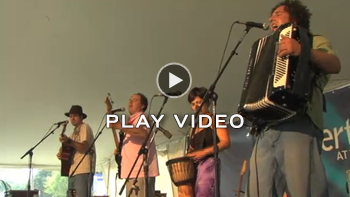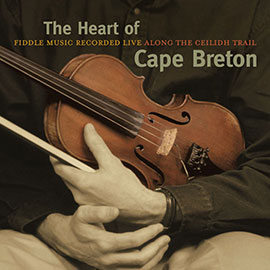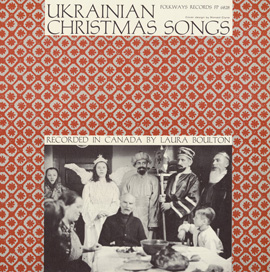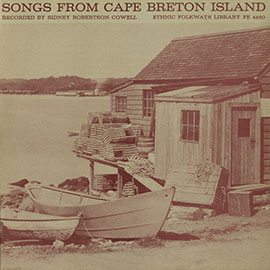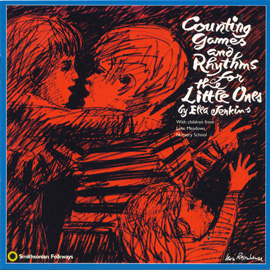Summary
This unit affords teachers with opportunities to lead children in active singing games and dances from Quebec, Canada. These lessons will offer young singers and players an opportunity to listen to, discuss, sing, play games, and create.
Suggested Grade Levels: K-2
Country: Canada
Region: Quebec
Culture Group: French Canadian
Genre: Children’s Music
Instruments: Voice
Language: French
Co-Curricular Areas:
Language Arts, Geography
National Standards: 1, 3, 6, 9
Prerequisites: Ability to keep a steady beat, some familiarity with how to move together in a circle.
Objectives:
- Students will listen to and describe children’s music of Quebec. (National Standard #6)
- Students will chant, sing, and move to game songs of Quebec. (National Standard #1)
- Students will create their own variations of the game songs and improvise movements to the folk songs of Quebec. (National Standard #3)
- Students will become familiar with children’s folk songs of Quebec. (National Standard #9)
Material:
Audio equipment to play recordings in the classroom, recordings of “Salade, Salade,” “Allo, Monsieur,” “Les Gars de Lochmine” from the Smithsonian Folkways album “Children’s Game Songs of French Canada,” map of North America or the world, a long skipping rope, a small to medium-sized bouncy ball, and non-pitched percussion instruments.

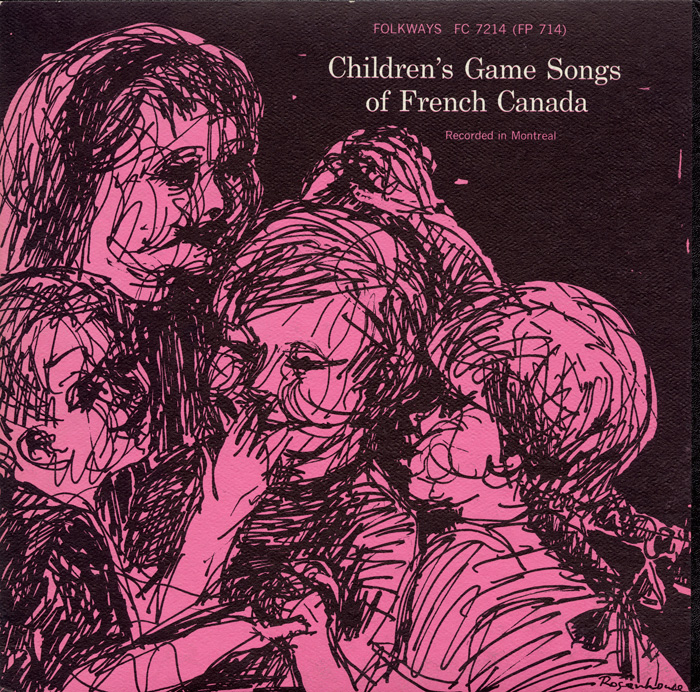
“Salade, Salade! - Game Song”
from Game Songs of French Canada (1956) | FW07214
“Allo, Monsieur (Recto-Tono Song)”
“Les Gars de Lochmine”
Lesson Segments:
- “Salade, Salade,” a rope game (National Standards #1, 2, 3, 6, 9)
- “Allo, Monsieur,” a ball-bouncing game (National Standards #1, 3, 6, 9)
- “Les Gars de Lochmine,” a folk dance (National Standards #1, 3, 6)
1. “Salade, Salade,”a rope game (National Standards #1, 2, 3, 6, 9)
French-Canadian Singing Game
Salade, salade, je suis malade!
D’avoir mange trop de salade
Ce soir.
(Un, deux, trois, quatre, cinq, six, sept, huit, neuf, dix...)
(Salad, salad, I'm sick!
From eating too much salad
Tonight. One, two, three, four, five, six, seven, eight, nine, ten...)
From the liner notes: “Two children, boys or girls move the rope very slowly, and a girl jumps over it, while the group is singing. Then, the rope is moved very quickly, group counting: One, two, three, etc...
When the dancer misses the step, another one goes in.”
Materials:
Recording of “Salade, Salade,” from “Children’s Game Songs of French Canada ,” a long jump rope for use with two turners and one jumper, non-pitched instruments.
Procedure:
- The teacher asks students to share any jump rope rhymes they know. (Some possibilities are: “Teddy Bear,” “Cinderella,” “Ice Cream Soda.”)
- Choose one rhyme that the students or teacher know well and chant it together while jumping in place to the accented pulses.
- Tell students they are going to hear another jump rope rhyme. Play the recording. Ask students, “Do you recognize the language?”(French) “What do you guess is happening at the end?” (They are counting).
- The teacher identifies the language as French, and asks the students, “Where in the world do you think these children are?” The teacher identifies the place as Quebec, Canada, where the main language spoken by the population majority is French, not English. Have children find Montreal, the major city of Quebec, on a map.
- Have students listen again, keeping a beat on their laps as they listen. Before playing the music, ask students, “Listen to see if you feel the beat on the first sound, or the second. Is this the same or different from most other jump rope rhymes we know?” (It is different from the structure of many jumping rhymes.)
- Ask students to jump in place while hearing the recording again. Remind them to get ready to jump on the first part of the word “Sa-lade”, so they land on the second part of the word (lade). To practice the counting words, have the students echo the counting words in French while still jumping in place. Ask students, “Where do the sounds of the rhyme sound uneven?” (At the beginning) “Where do they sound even?” (On the counting part)
- Invite students to play the game described in the liner notes, with two rope-turners gently swinging the rope back and forth while students jump over one at a time. Turners can speed up the rope when the counting begins. The teacher can chant at first, but should gradually leave out more and more for the children to fill in. Soon they will be chanting on their own.
- After playing the game on several different days, ask students to choose non-pitched percussion instruments of their choice to play the rhythm of the chant. Have students play while speaking the chant, then play without speaking the chant aloud. Try assigning different groupings, such as woods or drums, to the “uneven” part and others, such as metals or shakers, to the “even” part.
- Ask students to think of a new way to play the game with the instruments, such as having each student play his or her instrument one at a time around the circle on the section of the chant where they count. The student who plays on “dix,” or ten, could move to the center to play a special instrument.
Extension:
Have a class discussion of the ways languages and customs can travel from place to place.
Assessment:
Assess student ability to find the strong beat in section (e), to say the chant on section (g), and check for mastery of the uneven rhythm pattern in section (h).
2. “Allo, Monsieur,” a ball-bouncing game (National Standards #1, 2, 3, 6)
French-Canadian folk song, transcribed by S. Trinneer

(Hello, hello, sir!
Do you go out tonight, sir?
No, no, sir.
Why do so, sir?
I have a cold, sir.
Cough and be done, sir.
Achoo! Achoo! Achoo! Achoo!)
From the liner notes: “While all of the children speak the song, two players hit the ball, and on the word “monsieur,” they pass the right leg over the ball, repeating this figure on the three: Atchoum! Atchoum! Atchoum!”
Materials:
Recording of “Allo, Monsieur: Le Jeu de la Balle” (The Game of the Ball) from “Children’s Game Songs of French Canada ,” a medium-sized ball, such as a playground ball or basketball, non-pitched instruments.
Day 1: Students listen to the recording of “Allo, Monsieur,” and describe what they hear. Possible leading questions: “What do you hear?” (Voices only) “Who is singing?” (Children) “What do you think they are doing?” “Do you recognize the language?”
- The teacher identifies the language as French. Further questions: “Where in the world do you think these children are?” (Quebec, Canada) The students may be getting better at guessing where the music is from if the first segment was already taught. Have them find Quebec on a map again.
- The teacher tells the students that the chant is a conversation between two men and the word “Monsieur” means “sir.” The students listen a second time, raising their hands when they hear the word, “Monsieur.” The teacher asks, “what do you think happens at the end?” (He sneezes.)
- The teacher tells the students that the song is a ball-bouncing game, and has them form a circle. While hearing the recording, all the students “air bounce” an imaginary ball while speaking the word “monsieur” whenever it happens in the recording. (This is tricky, because it doesn’t always come at exactly the same time.) Then the teacher has one student bounce a playground ball on the word “Monsieur,” passing the ball to the next student in the circle on the “other words.” The student who gets the ball on the sneezes has to bounce it quickly four times. Repeat until all students have had one turn.
- Day 2: Review the ball-bouncing activity from the previous session with the students, but ask students to join in speaking the other words as they are able.
- Day 3: Repeat the ball-bouncing activity without the recording.
- Day 4: The students play the game as described in the liner notes. Two students go to the middle of the circle and bounce the ball back and forth, bouncing it under one leg on each “monsieur.”
- Day 5: Have students as a whole group, or in small groups, improvise conversations to have while playing the ball-bouncing game. Who might have the conversation? Maybe it’s two friends, a doctor and a patient, or a parent and a child. The possibilities are unlimited.
- Day 6: Improvise musical conversations in the style of “Allo, Monsieur” on non-pitched instruments. Ask for student suggestions for a rhythm to use as the repeating “answer” and decide as a class on a signal to tell when it’s time to answer.
Extension:
Find more ball-bouncing games, especially those associated with singing and chanting, from other cultures to play with students.
Assessment:
Assess student ability to focus and join in with the ball-bouncing and musical conversation activity.
3. Les Gars de Lochmine, a folk dance (National Standards #1, 3, 6)
French-Canadian Folk Song, transcribed by S. Trinneer

Verse 1: Mon pere et ma mere
D’locmine ils sont
Mon pere et ma mere
D’locmine ils sont
Ils ont promesse
Qu’ils me marieront.
Ils ont promesse
Qu’ils me marieront.
From the liner notes: “The children stand in a circle, for the ‘ronde’ which they dance, while singing the verses. They stop for the chorus, dancing (en place) hands on the hips, stamping with the right foot. 16 beats, and clapping hands high over their heads for: YOOO! Same figure with the left foot.”

Materials:
Recording of “Les Gars de Lochmine,”from “Children’s Game Songs of French Canada.”
Day 1: Teacher plays “Les Gars de Lochmine” while students keep the beat in various ways as modeled by the teacher.
- Teacher asks, “What did you hear?” (Children singing, clapping, the high-pitched “Yoo!”) “Who recognizes the language?” (French) “Where do you guess this is from, and why?” (Quebec, Canada. Some may say it sounds like the ball song or the rope song.)
- Teacher has students move to a standing or seated circle, and various students can lead the beat keeping. Change leaders at regular intervals, such as every eight beats and after the “Yoo!” Send the beat keeping around the circle.
- Day 2: Teacher plays the piece while students are standing in a circle. Ask students to step in place facing clock-wise (CW) and turn counter-clock-wise (CCW) when they hear the “space,” (or the “rest,” if they have learned it). Have them face in on the chorus (when they hear the “sont, sont, sont” part), and clap their hands over their heads as indicated in the photo above on the “Yoo!”
- Play the piece again, this time having students walk CW on the beat, turning CCW every eight beats, (on the spaces) and facing inward on the chorus.
- Perform the dance one more time, adding to the chorus section 15 stomps with the right foot before the first “Yoo,” and 15 stomps with the left foot before the second “Yoo.”
- Day 3: Review the dance, and ask the students to begin to sing the words of the chorus as they dance. Have them sing the melody of the verses on a neutral syllable, such as “loo.” Small groups of students can perform as the others watch.
- Day 4: Have students sing the chorus of “Les Gars de Lochmine” without the recording.
- Day 5: Continue to review the song and dance until the students are able to sing the first verse and chorus on their own, or have students continue to sing the melody of the verse on a neutral syllable.
- Day 6: Create groups of 4-6. Ask them to make up their own dance to the music.
Extension:
- For students who are ready for a challenge, have two or more circles dancing at a time and singing in canon, beginning the canon after four beats.
- Teach students a body-percussion ostinato to perform with the song, such as clapping the rhythm of “Les Gars de Lochmine.”
Assessment:
Assess student beat keeping ability in section (c), watch small groups perform the dance in section (g), evaluate how well students express the form of the song in their small group performances in section (j).
Additional resources from the Smithsonian Folkways website:
Video of Allez-Quest playing a francophone tune, to show students contemporary music from the region.


